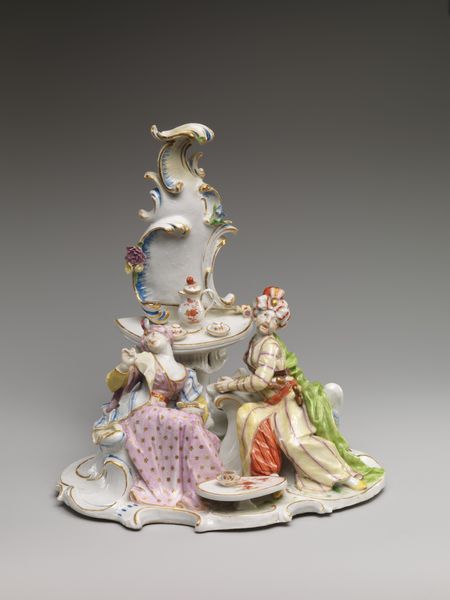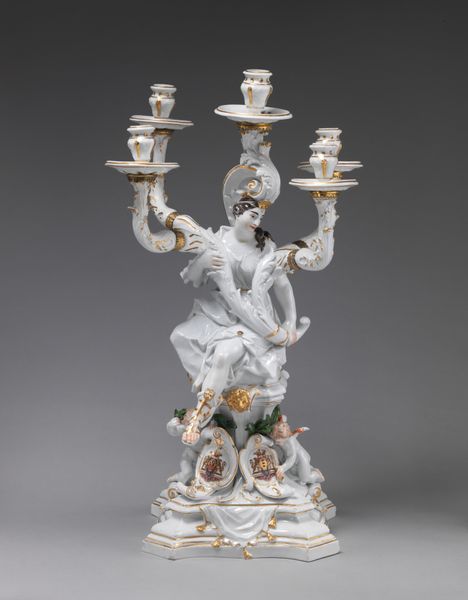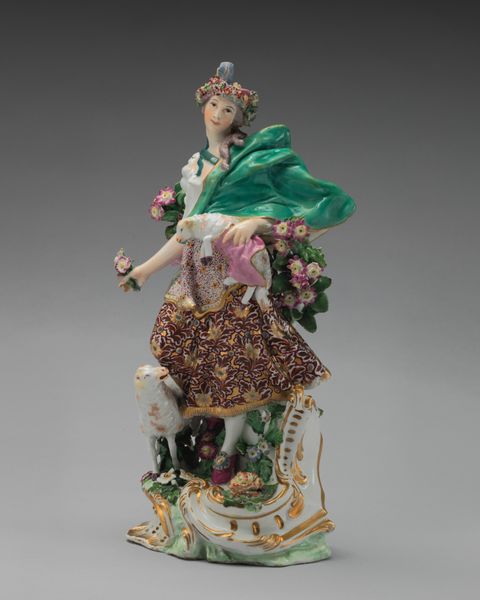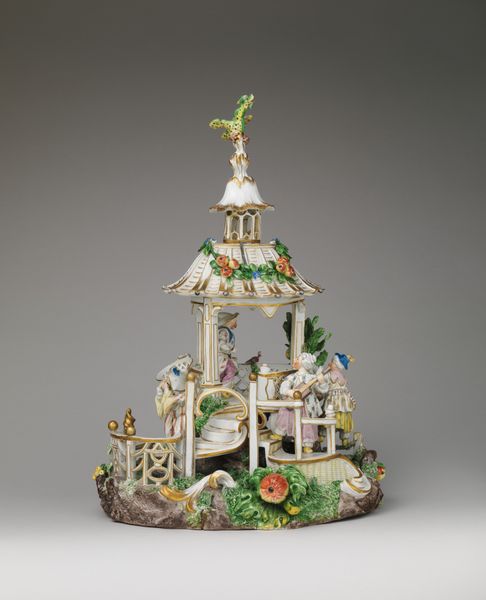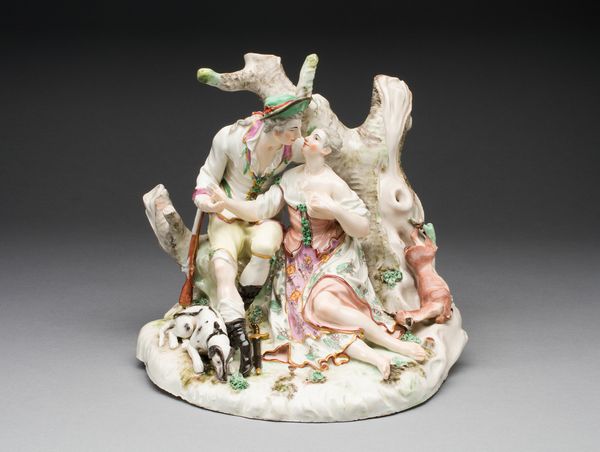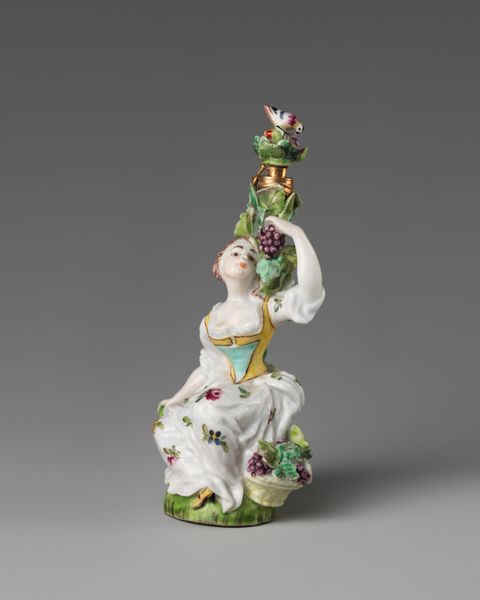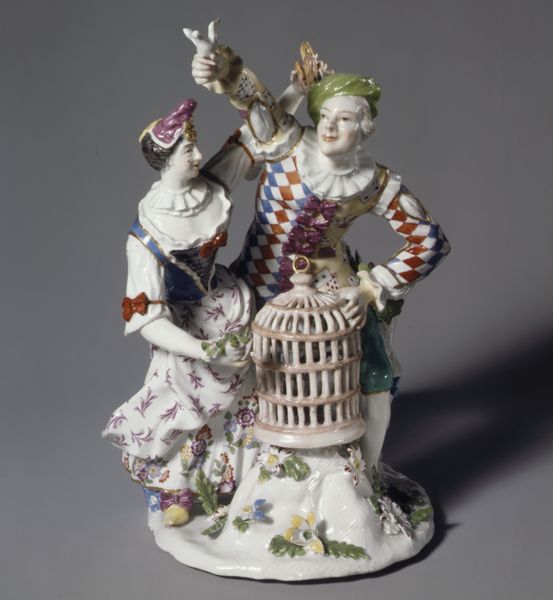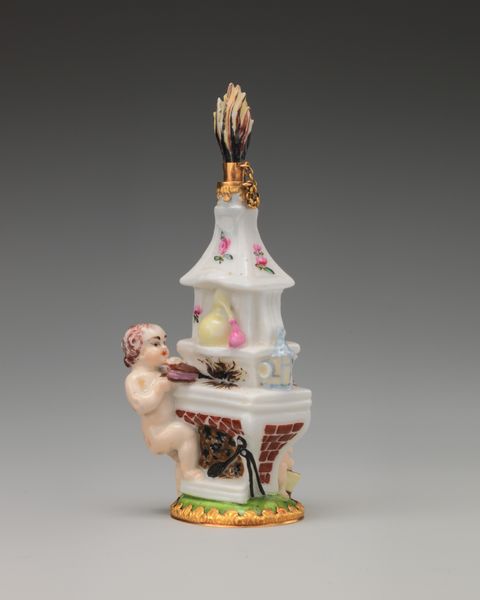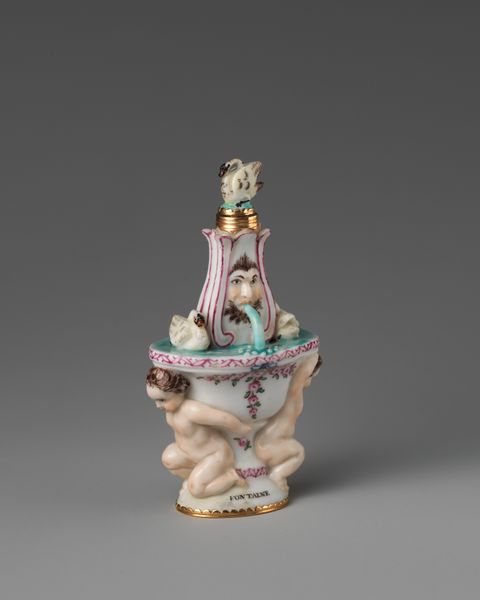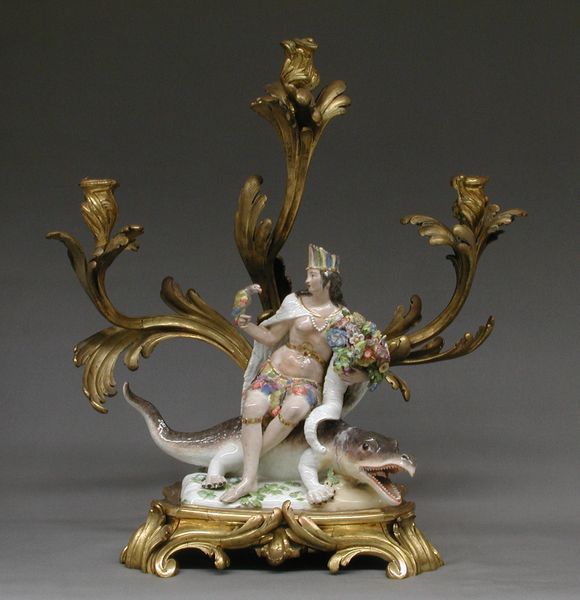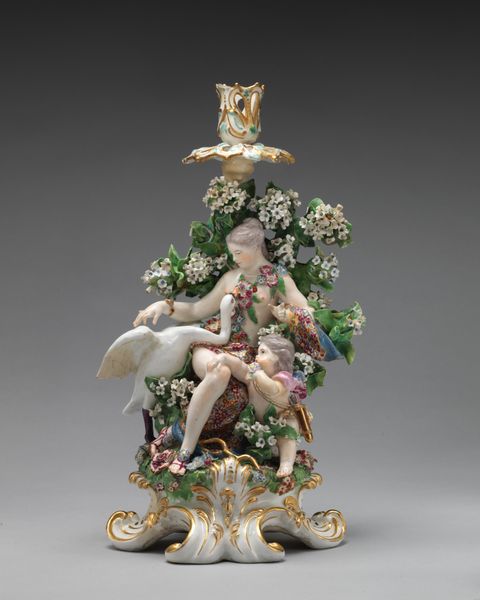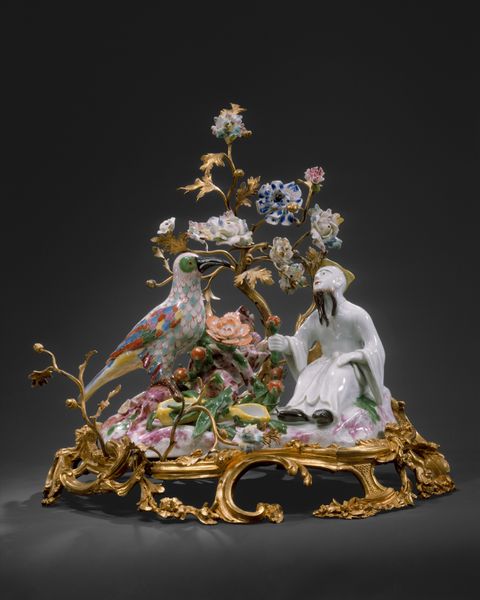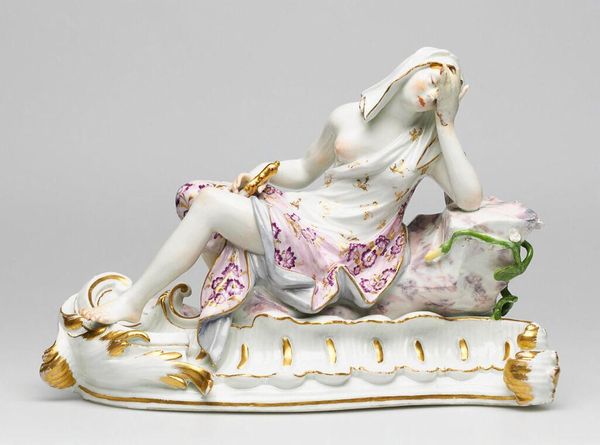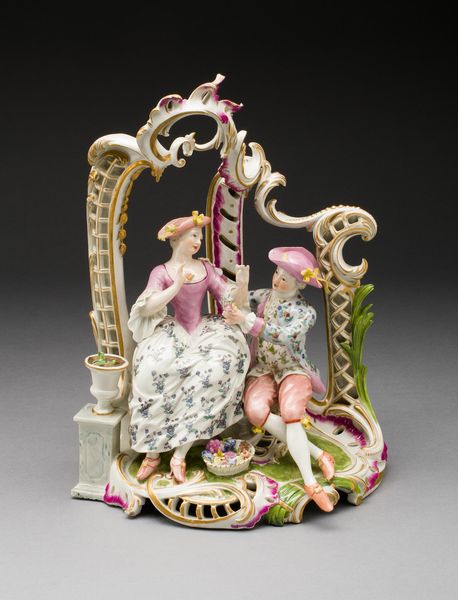
ceramic, porcelain, sculpture
#
dog
#
ceramic
#
porcelain
#
figuration
#
sculpture
#
genre-painting
#
history-painting
#
miniature
#
rococo
Dimensions: Overall (confirmed): 15 11/16 x 13 1/16 x 8 9/16 in. (39.8 x 33.2 x 21.7 cm)
Copyright: Public Domain
Curator: This is “The Chinese Emperor,” a porcelain sculpture crafted by the Höchst Manufactory between 1761 and 1771. Editor: My first impression is a kind of delicate theatricality. The Rococo style gives it this sense of lightness and movement, but it's all rendered in such precise detail. It feels simultaneously grand and incredibly fragile. Curator: Exactly. The sculpture provides a window into the 18th century European fascination with the East. We have to understand that pieces like these are more reflections of European fantasies than accurate portrayals of Chinese culture. There is no historical emperor that dressed or acted that way, and so it reflects colonialism. Editor: The symbols tell such a clear story of the time! Consider the miniature dog at the Emperor's feet: dogs often represented fidelity. Then we see other symbolic roles presented. Curator: Absolutely. The inclusion of specific imagery contributes to the overall message—in this case, power dynamics and racial biases. In this image, notice who’s kneeling before whom, for instance, and how status is explicitly portrayed. Editor: The tented canopy also carries certain weight. Not merely shelter but an assertion of hierarchy, framing the Emperor at center. Do you think it evokes an association with religious iconography too? It brings to mind Renaissance altarpieces with Mary in central view. Curator: Interesting parallel, though the "altarpiece" here is built upon very skewed cultural power dynamics. We can appreciate the artistic skill and elaborate aesthetic without letting go of the historical context surrounding the cultural appropriation it reflects. Editor: A compelling case, reframing how we can appreciate artwork through symbolic elements, understanding them as echoes from collective memory while viewing art critically and contextually. Curator: By layering this appreciation within the intricate framework of power structures from history, we give new insight on the work.
Comments
No comments
Be the first to comment and join the conversation on the ultimate creative platform.
